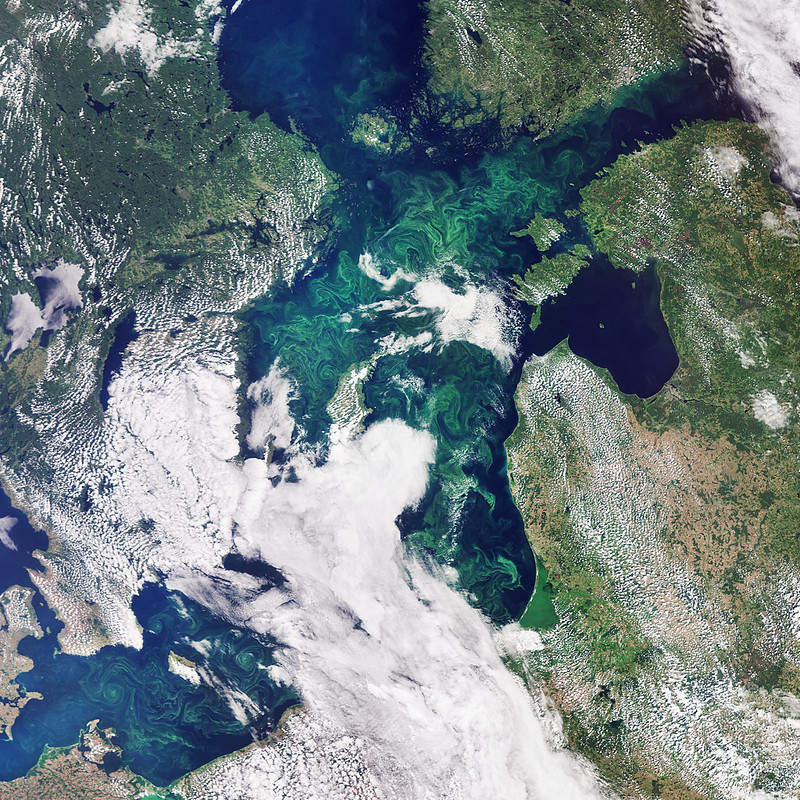Transboundary climate risk and adaptation

Introduction
When a global food price crisis occurred in 2007-8, many countries experienced severe social and political unrest. Analysts offered explanations of the causes, which were myriad, including not just poor harvests linked to unusual weather, but also the collateral effects of response measures taken by countries to insulate their domestic markets from early price spikes (such as export bans and commodity hoarding).
Two lessons from 2007-8 can be drawn: (1) that how interdependent countries respond to climate impacts and anticipated risks can be as important as the initial impacts themselves in determining levels of damage and disruption; and (2) climate impacts can affect other systems far away from their initial source.
This policy brief summarises the present state of knowledge on transboundary climate risks and discusses the implications for adaptation programming, policy and global governance.
*The key messages from the brief are provided below. Download the full brief from the right-hand column.
Key messages
- Adaptation science should support the policy community to adopt a transboundary lens to better manage the systemic nature of climate risk.
- Adaptation is not (just) local or national – it can also be regional or global, it requires scientific knowledge and cooperation at all scales, and should be recognized as delivering, in some cases, global public goods.
- Adaptation is not necessarily benign – it can redistribute vulnerability and create or magnify risk for others, especially across borders.
- Adapting to transboundary climate risk falls between the remits of government departments and national jurisdictions and ends up being “no-one’s job” – analysis is needed to support solutions at various scales.
What do we know about transboundary climate risks ?
There is emerging agreement on the intertwined pathways through which transboundary climate risks are expected to be transmitted, including via people, trade, ecosystems and finance. Other categories of transboundary climate risk commonly referred to include infrastructure, security, geopolitical and health risks.
Work has been undertaken to explore the potential distribution of exposure to transboundary climate risk at the global scale. The Transnational Climate Impacts (TCI) Index uses nine indicators of country-level exposure to rank 203 countries and compiles these indicators into a global index. The results paint a different picture of the distribution of climate risk to the one we are used to seeing from more traditional climate vulnerability and risk analyses, which tend to establish a strong correlation with levels of development. The top 30 countries in the TCI Index is much more diverse, with Europe the most represented region (with 9 countries), alongside SS-Africa (7), MENA (5, including the top 4 most exposed countries), SIDS (4), Central Asia (3) and South East Asia (2). Transboundary risks should therefore be taken seriously by all countries in their adaptation planning.
Has knowledge on transboundary climate risk informed adaptation policy and practice?
A small number of countries have explicitly attempted to assess transboundary risks at the national or city level, predominantly to assess the potential implications of climate change on approaches to security, development, diplomacy, trade, food security and migration. Few have translated these into specific adaptation priorities or specified adaptation measures to address transboundary climate risk in their national plans.
Much of the current effort to identify and govern cross-border risks takes place beyond the realms of what is explicitly called “adaptation”. For example, The African Union’s Great Green Wall Initiative aims to build regional resilience throughout the Sahel and Sahara.
There are also UN conventions other than the Framework Convention on Climate Change (UNFCCC) that hold mandates and remits relevant to the assessment and management of certain types of transboundary climate risk. In addition, the basic tenets of International Law could be applied to avoid “transboundary harm”.
Why should adaptation policymakers and practitioners take note?
If countries assume that they can build resilience in isolation, they are likely to face a “climate kickback” from the negative impacts of climate change on the countries, markets and ecosystems on which they depend. Transboundary cooperation and joint international action on adaptation is likely to reveal potential synergies, benefits, complementarities and even cost savings.
There are also benefits to be realised for the private sector. Companies will find it much easier to operate internationally if all of the locations where their raw materials, customers, partners and investors are based have adapted to climate change and their supply chains are resilient.
What kinds of adaptation might be effective?
There has been relatively little evidence generated to date to assess the most effective responses to govern, manage or adapt to transboundary climate risks, but multi-level adaptation will almost certainly be required.
Ideally, mechanisms would be developed to facilitate and incentivise countries to share and even co-create each other’s national adaptation plans in order to identify potential transboundary risks and alternative adaptation pathways that both avoid transboundary harm and maximise mutual benefits.
What needs to happen next?
There are a number of barriers that undermine the capability or motivation of policymakers to manage them:
- Challenges of dealing with complexity and uncertainty in assessments of spatially-dispersed risks, as well as the lack of established governance mechanisms for addressing systemic risk in today’s world.
- The evidence base that planners can use to derive adaptation priorities for transboundary climate risk is patchy and thin.
- It may be difficult for policymakers to generate significant political reward at the domestic level to justify investments in transboundary climate risk responses.
- A global backlash against the value of multilateralism and a surge in competitive, nationalist and protectionist stances also undermines the spirit of regional and international solidarity needed to effectively address transboundary climate risks.
There is a need to move on from a conceptual or analytical focus on ‘defining the problem’ to a counter-balance focus on ‘appraising solutions’: for example, analyses that identify policy entry points, decision-support that accounts for transboundary risks and technical guidance that applies this knowledge to the planning process.
- A Just Transition for Climate Change Adaptation: Towards Just Resilience and Security in a Globalising World
- Towards a Global Adaptation Progress Tracker: first thoughts
- Quantifying transnational climate impact exposure: new perspectives on the global distribution of climate risk
- Introducing the Transnational Climate Impacts Index: Indicators of country-level exposure – methodology report

Comments
There is no contentYou must be logged in to reply.